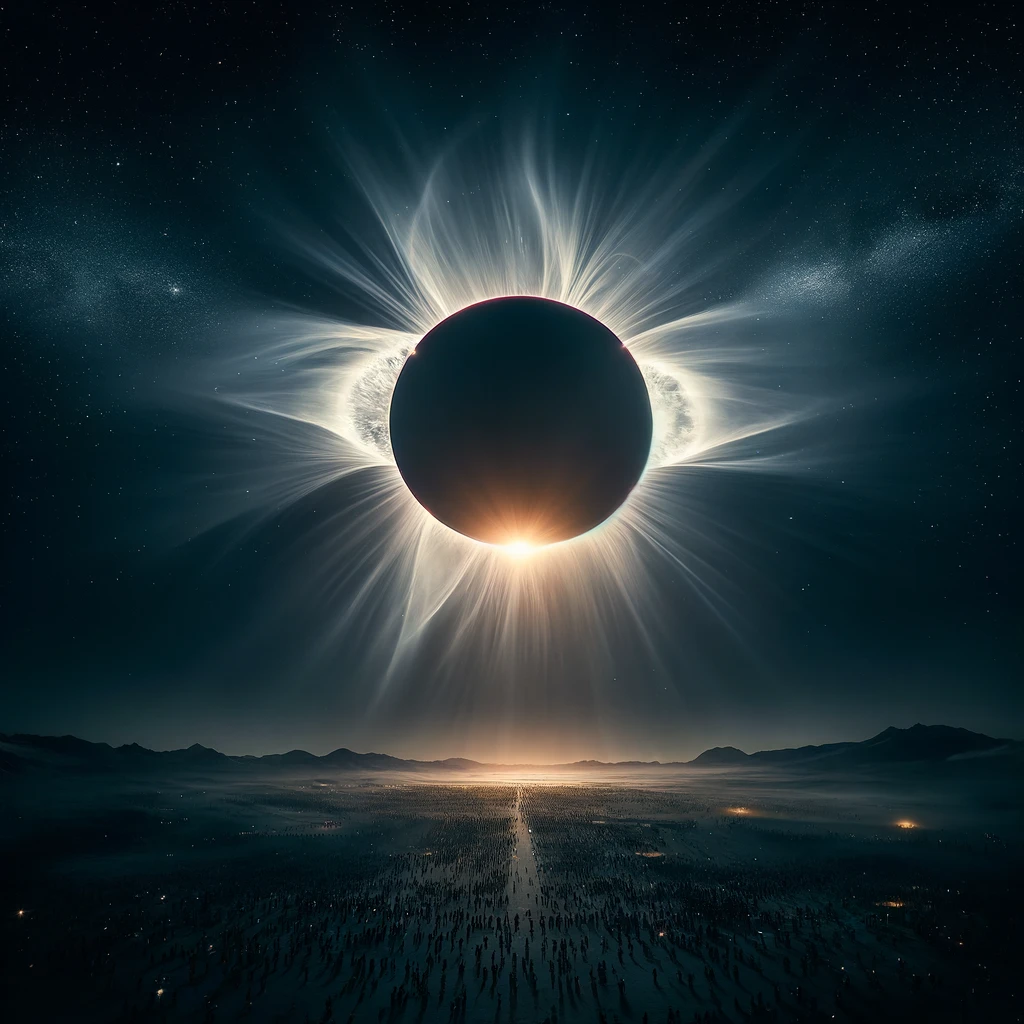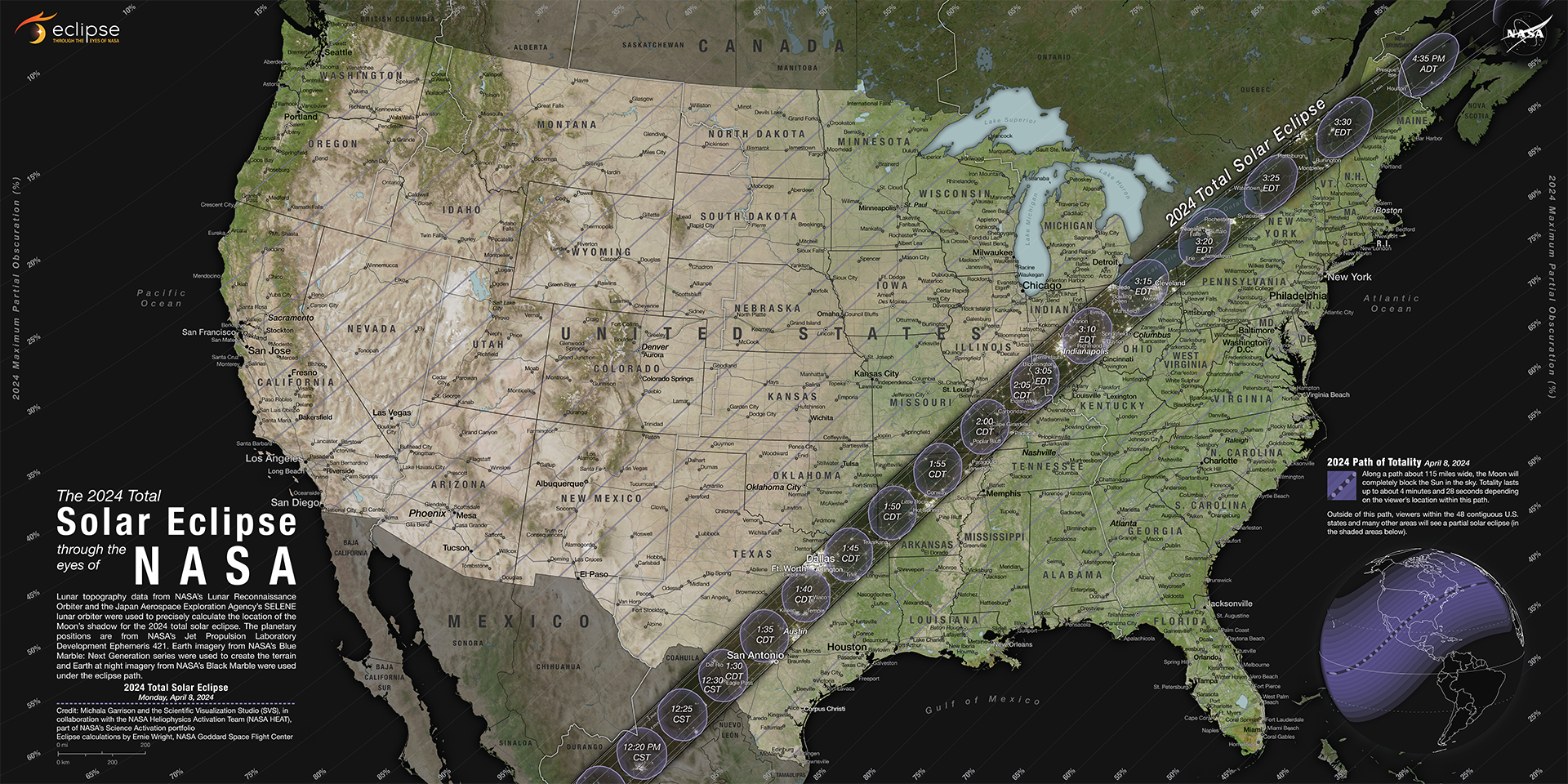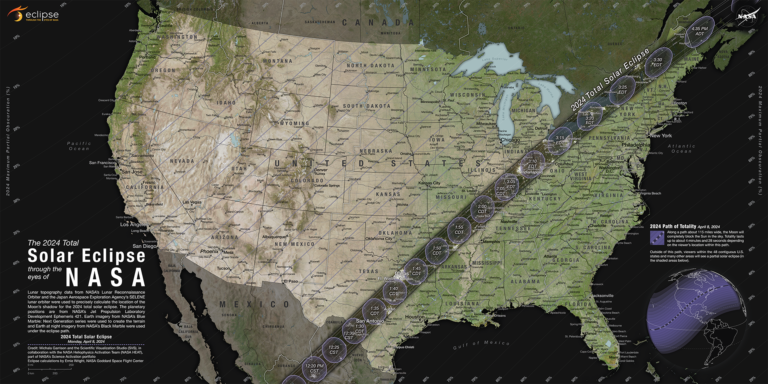On April 8, 2024, the next total solar eclipse is scheduled to occur, visible to residents of North America. Total solar eclipses are considered rarer phenomena because they happen in specific regions when the Moon, Earth, and Sun are apparently aligned, causing the effect of a total solar blockage—the duration is approximately four minutes.
On average, these events only occur in the same places every 375 years. For example, in Brazil, the last time a total solar eclipse occurred was in November 1994, while the next is not expected until August 2045.
Also, know: What is the difference between a total solar eclipse and an annular solar eclipse? The next total solar eclipse is being considered an even rarer event than the conventional one since it may coincide with the solar maximum. Every 11 years, the Sun undergoes a solar cycle that becomes more intense until reaching the solar maximum, and this period is predicted to occur between 2024 and 2025.
“During the 2024 eclipse, the Sun will be at or near its solar maximum, when its magnetic field will resemble a tangled ball of fur. Streamers will likely be visible across the corona. Additionally, viewers will have a better chance of seeing prominences — which appear as bright pink tufts or loops coming out of the Sun,” the United States National Aeronautics and Space Administration (NASA) describes in a publication.
Some authorities in the United States have issued an emergency alert for those planning to watch the event. In parts of the country, government messages suggest that people stock up on food, water, and gasoline to avoid bigger problems.
But exactly why is the total solar eclipse so dangerous and can become chaotic? To answer this question, we have gathered official information from the U.S. government and experts in the field.
The beautiful astronomical event that can turn into a headache A warning from Lorain County, USA, states that authorities anticipate crowds during the total solar eclipse. They also asked residents of the region to prepare for possible issues involving congested lanes, full hospitals, disrupted cell networks, among others.
As explained on the Lorain County website, preparation involves stocking up on gasoline, food, drinks, avoiding any unnecessary commitments scheduled for April 8, 2024, and canceling trips planned during the period.
But after all, is some kind of apocalypse expected? The simplest answer is: no. What happens is that the region wants to avoid any type of chaotic congestion during the event.
“What we could have here are crowds we are not used to. We are not prepared in terms of infrastructure for this, we don’t have the roads,” said a Lorain County spokesperson, Dave Freeman, in a message to the site USA Today.
Some schools in Texas, USA, have already announced they will close during the 2024 total solar eclipse to avoid the congestion of people in the region. As it is a rare natural event, it is likely that many people will travel to rural areas to observe the phenomenon in a clearer sky. Therefore, the county is suggesting its residents prepare for any type of problem that may involve congestion in the region.
Experts claim that the excess of people will not only be a problem for Lorain, other places in the United States will also likely face similar issues. Millions of people are expected to travel to locations where the observation of the total solar eclipse is best, however, these regions are not prepared to receive so many people.

Understand: Eclipses and their implications in the culture, mythology, and science of ancient peoples “Across the country, interstate highways near the path of totality experienced traffic congestion immediately after the eclipse, with travel times longer than normal on interstate highways. For example, journeys from Casper, Wyoming, to Denver, Colorado — normally a 4-hour trip — took 10 hours or more. Traffic congestion on rural interstate routes lasted up to 13 hours after the eclipse [of 2017],” said transportation engineering consultant Jonathan Upchurch from Transportation Research News to the site IFLScience.
Solar maximum and the risk of telecommunications blackout As the eclipse may occur during the period of solar maximum, experts claim that the year 2024 may be marked by a major internet blackout and other problems involving electrical networks. Of course, this could happen at another time of the year, or even not happen at all.
Recently, the New York State Police issued an alert suggesting that the next total solar eclipse should also affect cell networks in regions with the best visibility to observe the phenomenon. The excessive use of cellphones and mobile internet will be responsible for this possible telecommunications blackout.
Read more: The last total solar eclipse on Earth may already have a set date; understand Some North American carriers have already spoken about the potential problems involving the eclipse, and claim they are reinforcing their networks to prevent slowdowns or other effects caused by congestion.
“T-Mobile is working side by side with state and local authorities to address the anticipated increase in network traffic and ensure seamless connectivity for everyone. Whether facing large influxes in data usage or high demand, our network — which is the largest, fastest, and most awarded in the country — has coverage for everyone,” said T-Mobile’s President of Technology, Ulf Ewaldsson.
This table provides the time that totality begins in some U.S. cities in the path of totality. These areas will also experience a partial eclipse before and after these times.
| Location | Partial Begins | Totality Begins | Maximum | Totality Ends | Partial Ends |
|---|---|---|---|---|---|
| Dallas, Texas | 12:23 p.m. CDT | 1:40 p.m. CDT | 1:42 p.m. CDT | 1:44 p.m. CDT | 3:02 p.m. CDT |
| Idabel, Oklahoma | 12:28 p.m. CDT | 1:45 p.m. CDT | 1:47 p.m. CDT | 1:49 p.m. CDT | 3:06 p.m. CDT |
| Little Rock, Arkansas | 12:33 p.m. CDT | 1:51 p.m. CDT | 1:52 p.m. CDT | 1:54 p.m. CDT | 3:11 p.m. CDT |
| Poplar Bluff, Missouri | 12:39 p.m. CDT | 1:56 p.m. CDT | 1:56 p.m. CDT | 2:00 p.m. CDT | 3:15 p.m. CDT |
| Paducah, Kentucky | 12:42 p.m. CDT | 2:00 p.m. CDT | 2:01 p.m. CDT | 2:02 p.m. CDT | 3:18 p.m. CDT |
| Carbondale, Illinois | 12:42 p.m. CDT | 1:59 p.m. CDT | 2:01 p.m. CDT | 2:03 p.m. CDT | 3:18 p.m. CDT |
| Evansville, Indiana | 12:45 p.m. CDT | 2:02 p.m. CDT | 2:04 p.m. CDT | 2:05 p.m. CDT | 3:20 p.m. CDT |
| Cleveland, Ohio | 1:59 p.m. EDT | 3:13 p.m. EDT | 3:15 p.m. EDT | 3:17 p.m. EDT | 4:29 p.m. EDT |
| Erie, Pennsylvania | 2:02 p.m. EDT | 3:16 p.m. EDT | 3:18 p.m. EDT | 3:20 p.m. EDT | 4:30 p.m. EDT |
| Buffalo, New York | 2:04 p.m. EDT | 3:18 p.m. EDT | 3:20 p.m. EDT | 3:22 p.m. EDT | 4:32 p.m. EDT |
| Burlington, Vermont | 2:14 p.m. EDT | 3:26 p.m. EDT | 3:27 p.m. EDT | 3:29 p.m. EDT | 4:37 p.m. EDT |
| Lancaster, New Hampshire | 2:16 p.m. EDT | 3:27 p.m. EDT | 3:29 p.m. EDT | 3:30 p.m. EDT | 4:38 p.m. EDT |
| Caribou, Maine | 2:22 p.m. EDT | 3:32 p.m. EDT | 3:33 p.m. EDT | 3:34 p.m. EDT | 4:40 p.m. EDT |
Want to download this map and view other versions? Visit NASA’s Scientific Visualization Studio.
NASA’s Scientific Visualization Studio













